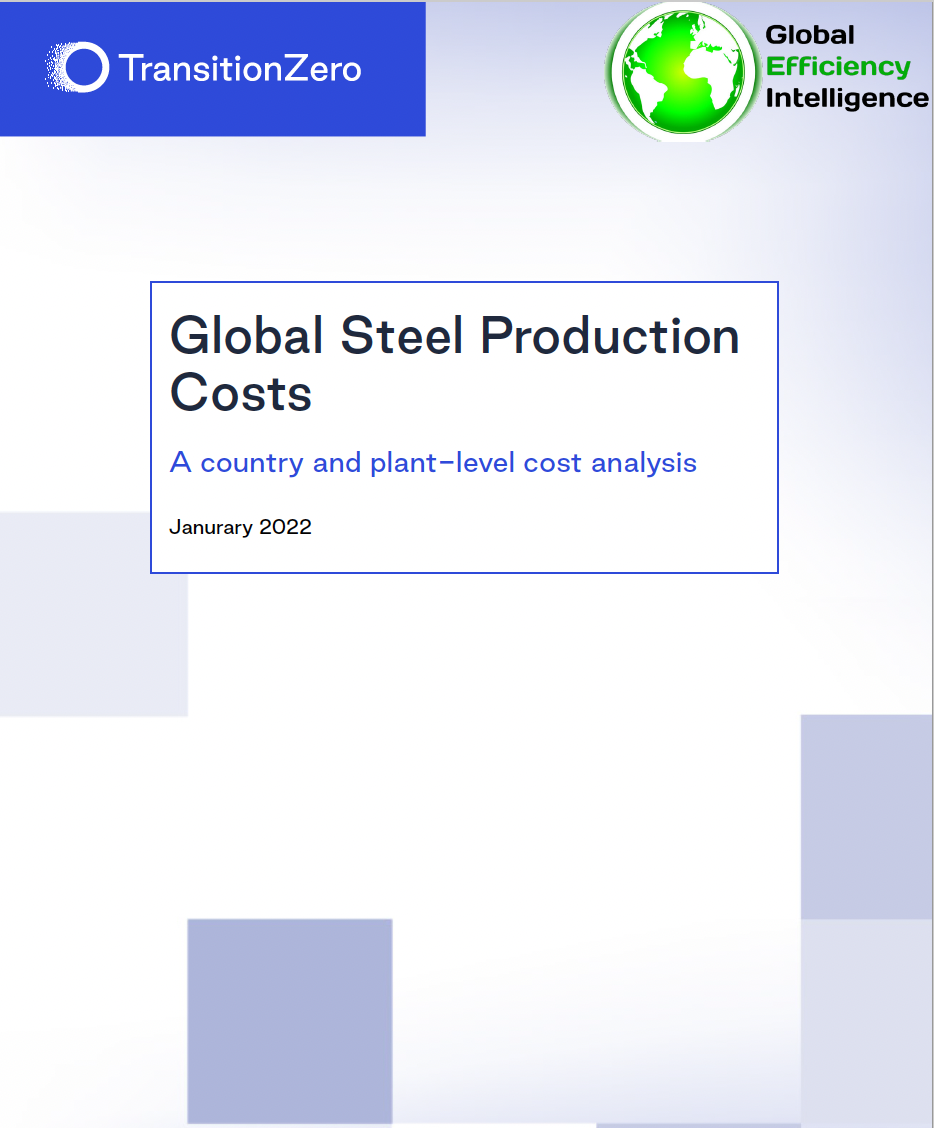Global Steel Production Costs
Authors: Badr M'barek, Ali Hasanbeigi, Matthew, Gray
Total steel production was 1,878 million tonnes (Mt) in 2020. The top 10 steel producing countries accounted for 86% of world steel production. Substantial amounts of steel are traded globally, meaning steel is often considered to be a trade-exposed industry. The cost of steel production is an important factor in keeping a steel producing country or a particular steel plant competitive in such an international market.
Steel production is also an energy-intensive and high-carbon process. The global steel industry accounts for around 11% of total global carbon emissions. Increasingly, countries and steel companies are under pressure to reduce their energy use and carbon emissions in both the short and long-term. In fact, in recent years, some major steel producing companies have committed to carbon neutrality by 2050, with interim milestones.
In addition, increasing climate policies are putting pressure on the steel industry. A substantial amount of CO2 is embodied in traded steel, a concern which new climate policies such as EU’s Carbon Border Adjustment Mechanism (CBAM) is aiming to address.
Better knowledge of steel production costs in different countries can help policymakers and other stakeholders to make more informed decisions and design better policies to address the steel industry’s high energy use and CO2 emissions in this trade-exposed industry. This report aims to provide such information.
This report by TransitionZero and Global Efficiency Intelligence presents a study on steel production costs in major steel producing countries around the world. The analysis is carried out both at the country-level and plant-level, and showcases yearly production costs between 2019 to 2021, broken down by the major cost components of the steel production: namely raw materials, energy, labor, and “other costs”. In addition to estimating total steel production cost in each country, we have also estimated the steel production cost for both primary steelmaking, using blast furnace and basic oxygen furnace (BF-BOF), and secondary steelmaking using electric arc furnace (EAF), separately.
To read the full report and see complete results and analysis of this new study, Download the full report from the link above.
Interested in data and decarbonization studies on the global steel industry? Check out our list of steel industry publications on this page.

